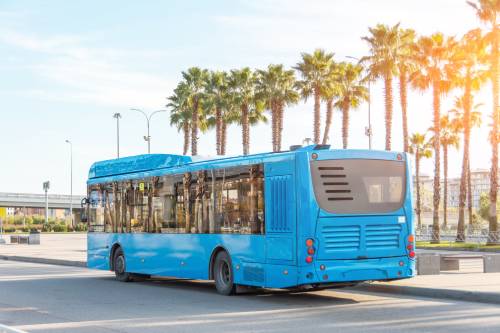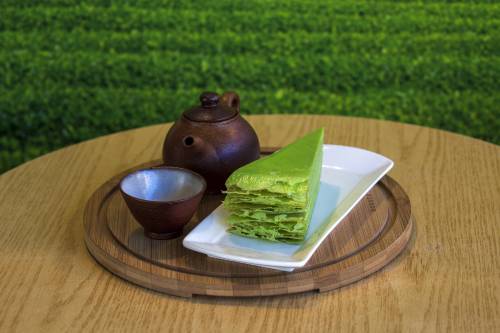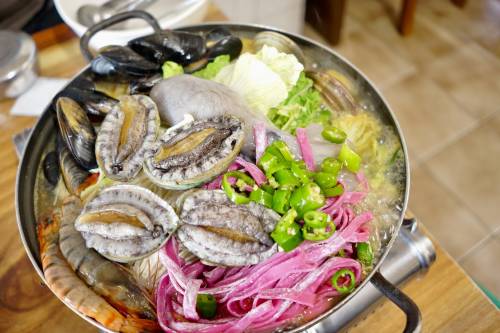Jeju Island Travel Guide: Things to Do, What to Eat
5 Feb 2024

Autumn has finally arrived. Imagine Jeju Island draped in a blanket of silver grass. As the gracefully arching grass sway gently in the wind, they create a breathtaking vista of beauty and romance. Don't wait! Let this food and travel guide lead you to the heart of Jeju Island. It’s time to embark on your self-guided journey today!
Jeju Island transportation
Traveling around Jeju Island is a breeze with various transport options. Once you land, you can either hop on public transport, grab a taxi, or rent a car to tour around Jeju.
To make your journey smoother, purchase a T-money transportation card at convenience stores for about HKD 16. Works like the Octopus card, simply load it up and use it not just for rides but also for quick purchases at stores. Pro tip: If you have leftover funds on your card, treat yourself at the convenience stores before you leave Jeju!

To ride on the bus, just tap your T-money card when you get on. And don't forget to hit the red 'Stop' button when you're ready to hop off—otherwise, the bus will keep going! Jeju’s buses have a nifty free transfer policy: tap off on exit and you can hop onto another bus for free within the next 30 minutes. No transfer needed? Then no need to tap. Plus, all transport comes with a simple, standard fee—no fuss over fares here!
You can easily hail a taxi using mobile apps like Kakao T, NAVER, or Papago. Just keep in mind that during busy times or for shorter rides, there might be a bit of a wait.
Renting a car to go sightseeing in Jeju is very easy, with rental services conveniently located near the airport offering attractive rates – ideal for those looking to explore the island at their own pace. Pro tip: make sure to secure an international driving permit before your journey begins! If you're burdened with heavy luggage and prefer not to carry it everywhere, consider a private hire car. The cost will depend on factors like the day of the week, number of passengers, amount of luggage, and your chosen itinerary. For example, a private car hired on a Saturday with luggage, following the western route of Jeju Island, might cost around HKD 1400. Private hire drivers are known for their helpful route planning, ensuring you save time while bringing you peace of mind.
Things To Do in Jeju Island
Sangunmburi
As the setting for many romantic films, Sangumburi is a renowned sightseeing place in Jeju for witnessing the enchanting sea of silver grass. In autumn, the grass dresses the entire hill in a shimmering hue. This spectacle typically lasts 2-3 months, so be sure to seize the opportunity bask in its beauty. Beyond the grass, the area boasts a variety of attractions, including rock pools and volcanic craters, waiting to be explored.
Address: 768 Bongjae-ri, Jocheon-eup, Jeju City
Transportation: Take a bus from the Jeju Intercity Bus Terminal heading to Pyeongsa-ri. Get off at Sangumburi (approximately 40 minutes). Buses run every hour.
Woljeong Beach
When you are in Jeju, you have got to visit Woljeong Beach for its pristine waters of moderate depth, fine white sands, and a turquoise horizon that looks straight out of a painting. When the sky is clear, every photo you capture is picture-perfect.
Address: Woljeongri Beach, Woljeong-ri, Gujwa-eup, Jeju-si, Jeju-do, South Korea
Transportation: Take a seated intercity bus heading to Hamdeok. Buses depart every 20 minutes and the journey takes about 40 minutes; or you can take the East Line intercity bus from Jeju City to Seogwipo City, heading towards Hamdeok.
Woljeong-ri
Woljeong-ri, nestled on the east coast of Jeju Island, is named "the place where the moon rests." Here, the azure sea stretches out like a canvas. The beach is sprinkled with colorful chairs, offering a perfect spot for snapshots. Stroll along the coastal road and you'll find many cafes where you can savour coffee with a view of the sea, basking in the tranquil moments.
Time: 10:00 - 18:00
Address: 제주특별자치도 제주시 구좌읍 해맞이해안로 480-1
Tea Culture Museum
For cultural history enthusiasts, the Tea Culture Museum is a must-visit. Dive into the rich history of Korean tea culture and indulge in an array of green tea-infused desserts at the museum’s café. Prefer something different? Opt for local delights such as Udo peanuts and Jeju tangerines. Don't forget to capture the beauty of the green tea fields, an ideal setting for photo ops. Entry is complimentary; just be sure to schedule your visit a day ahead.
Address: 15 Shinwha Historical Road, Andeok-myeon, Seogwipo City

Best Food in Jeju Island

Samseonghyeol Haemultang
When on Jeju Island, don't miss out on the local specialty - Samseonghyeol Haemultang. A top pick is the beloved seafood hot pot, brimming with octopus, abalone, crab, and more. With its rich variety and fresh, sweet flavours, it's a seafood lover's dream. And don't worry about language barriers; the restaurant's owner and staff are fluent in Chinese for easy communication!
Address: 20 Seondeong-ro 5-gil, Yeon-dong
Price: Around HKD160 per head
Café Mou Moon
Cafe Mou Moon boasts a striking floor-to-ceiling glass facade offering panoramic sea views. Watch waves washing up on the shore and people enjoying the beachfront, all from the comfort of your seat. Beyond coffee, you'll find a selection of snacks and ice creams to delight every taste!
Address: 제주 제주시 구좌읍 해맞이해안로 460 2층
Price: The average cost for coffee is about 8,000 won per person
Business Hours: Daily from 10:00 AM to 9:00 PM (Last orders at 8:00 PM)
Hugely
Enjoy a perfect day with a seascape, ice cream, and iced coffee! A mere 10-minute drive from Jeju Airport, this spot offers breathtaking views of aeroplanes gliding over the ocean. Whether you're grounded on the first floor or taking in the panorama from the rooftop, indulge in desserts crafted from local Jeju ingredients. Try the 'Gellabong' and 'M Hyunmu' ice creams, flavours inspired by Hallasan Mountain and Jeju's basaltic terrain. The shop serves coffee and bread too. Don't forget to capture the moment with a photo against the beach view and your tasty treat for that perfect vibe.
Address: 83 Heungun Street, Jeju City
Price: The average cost for coffee is approximately 6,500 to 8,000 Korean won per person.
Check out other Korea travel tips:
4 Spots To See The Best Cherry Blossoms in Korea
